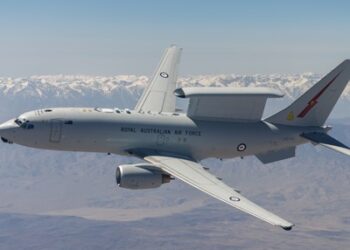The Navy is making progress in its pursuit of maritime, specifically underwater, drones. Rep. Rob Wittman, R-Va., vice chairman of the House Armed Services Committee, expressed the importance of being able to produce these drones en masse when awarding contracts. During Defense One’s State of Defense Business event on Tuesday, he noted that while there has been significant research and experimentation, it is now crucial for the Navy to begin down-selecting options and scaling operations quickly.
Wittman cited an example of Saronic, a drone-boat startup based in Austin, Texas, which built a 150-foot autonomous surface vessel in about six months. Saronic recently announced at a General Catalyst Institute event that it is on track to complete the build of its Marauder vessel, which boasts a 3,500 nautical mile range, by December. Wittman, who was also a speaker at the event, highlighted Saronic’s impressive timeline as indicative of what can be achieved.
Dino Mavrookas, CEO and co-founder of Saronic, shared that they acquired a shipyard in Franklin, Louisiana, which was closing down. He emphasized the importance of bringing new capacity online to the U.S. maritime industry. They laid their first weld on June 24, 2023, and expect the vessel to be in the water by the end of the year. Moreover, Saronic has started building its second Marauder alongside the first, already noticing production efficiency gains.
Saronic is not alone in the defense tech sector’s ambition to produce sea drones at scale. Anduril recently announced its plans to develop an autonomous surface vessel prototype in collaboration with HD Hyundai Heavy Industries in South Korea, with production slated for their shipyard in Seattle, Washington. Additionally, HavocAI has declared intentions to construct a 100-foot drone boat this year.
Rep. Wittman stressed that such rapid production capabilities should also apply to underwater vessels. He called for the Navy to award contracts not just for the sake of it, but to ensure timely delivery and performance of underwater platforms within strict time frames. “That’s the kind of pace we need,” he concluded.













